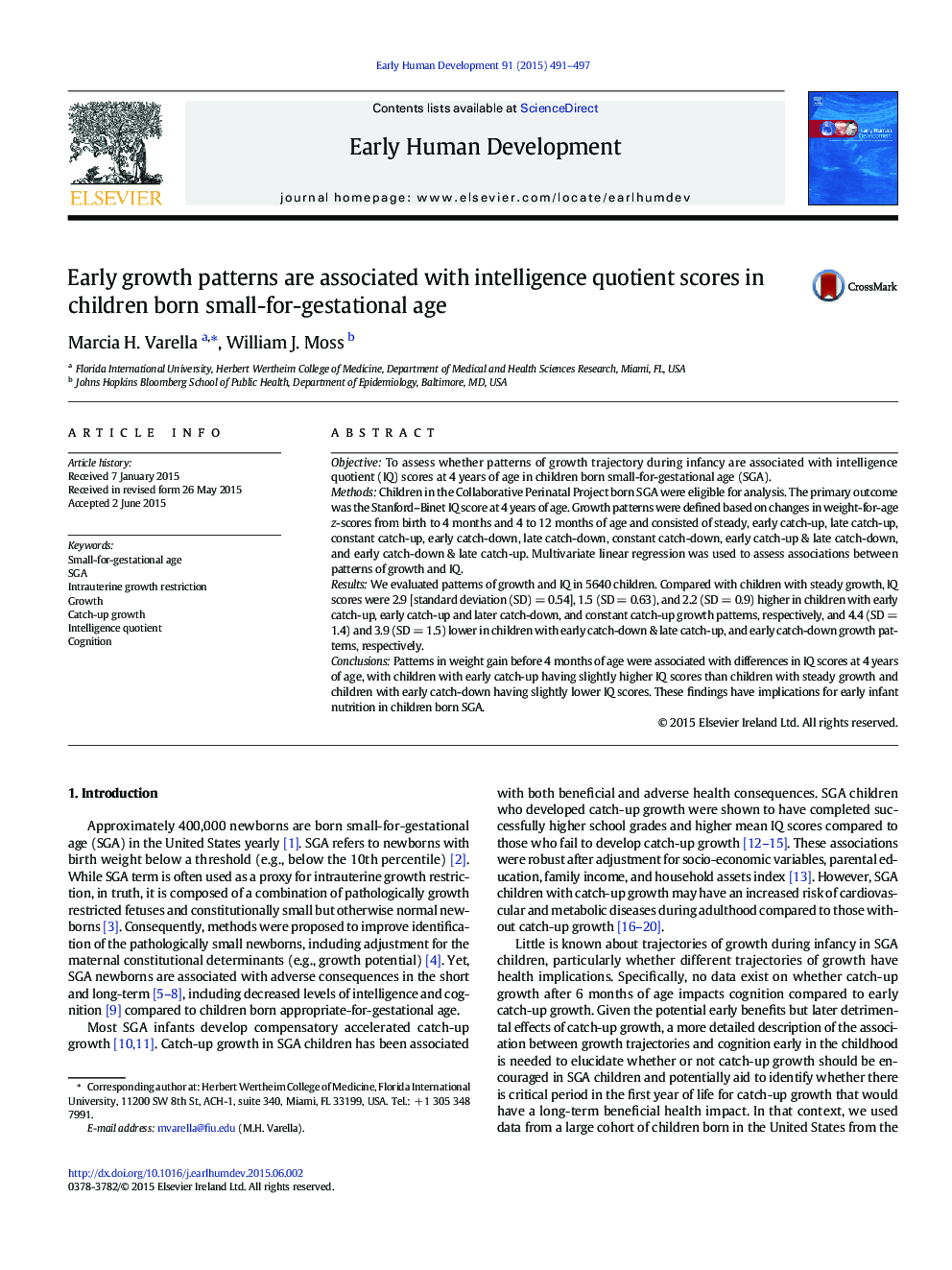| Article ID | Journal | Published Year | Pages | File Type |
|---|---|---|---|---|
| 3916410 | Early Human Development | 2015 | 7 Pages |
ObjectiveTo assess whether patterns of growth trajectory during infancy are associated with intelligence quotient (IQ) scores at 4 years of age in children born small-for-gestational age (SGA).MethodsChildren in the Collaborative Perinatal Project born SGA were eligible for analysis. The primary outcome was the Stanford–Binet IQ score at 4 years of age. Growth patterns were defined based on changes in weight-for-age z-scores from birth to 4 months and 4 to 12 months of age and consisted of steady, early catch-up, late catch-up, constant catch-up, early catch-down, late catch-down, constant catch-down, early catch-up & late catch-down, and early catch-down & late catch-up. Multivariate linear regression was used to assess associations between patterns of growth and IQ.ResultsWe evaluated patterns of growth and IQ in 5640 children. Compared with children with steady growth, IQ scores were 2.9 [standard deviation (SD) = 0.54], 1.5 (SD = 0.63), and 2.2 (SD = 0.9) higher in children with early catch-up, early catch-up and later catch-down, and constant catch-up growth patterns, respectively, and 4.4 (SD = 1.4) and 3.9 (SD = 1.5) lower in children with early catch-down & late catch-up, and early catch-down growth patterns, respectively.ConclusionsPatterns in weight gain before 4 months of age were associated with differences in IQ scores at 4 years of age, with children with early catch-up having slightly higher IQ scores than children with steady growth and children with early catch-down having slightly lower IQ scores. These findings have implications for early infant nutrition in children born SGA.
